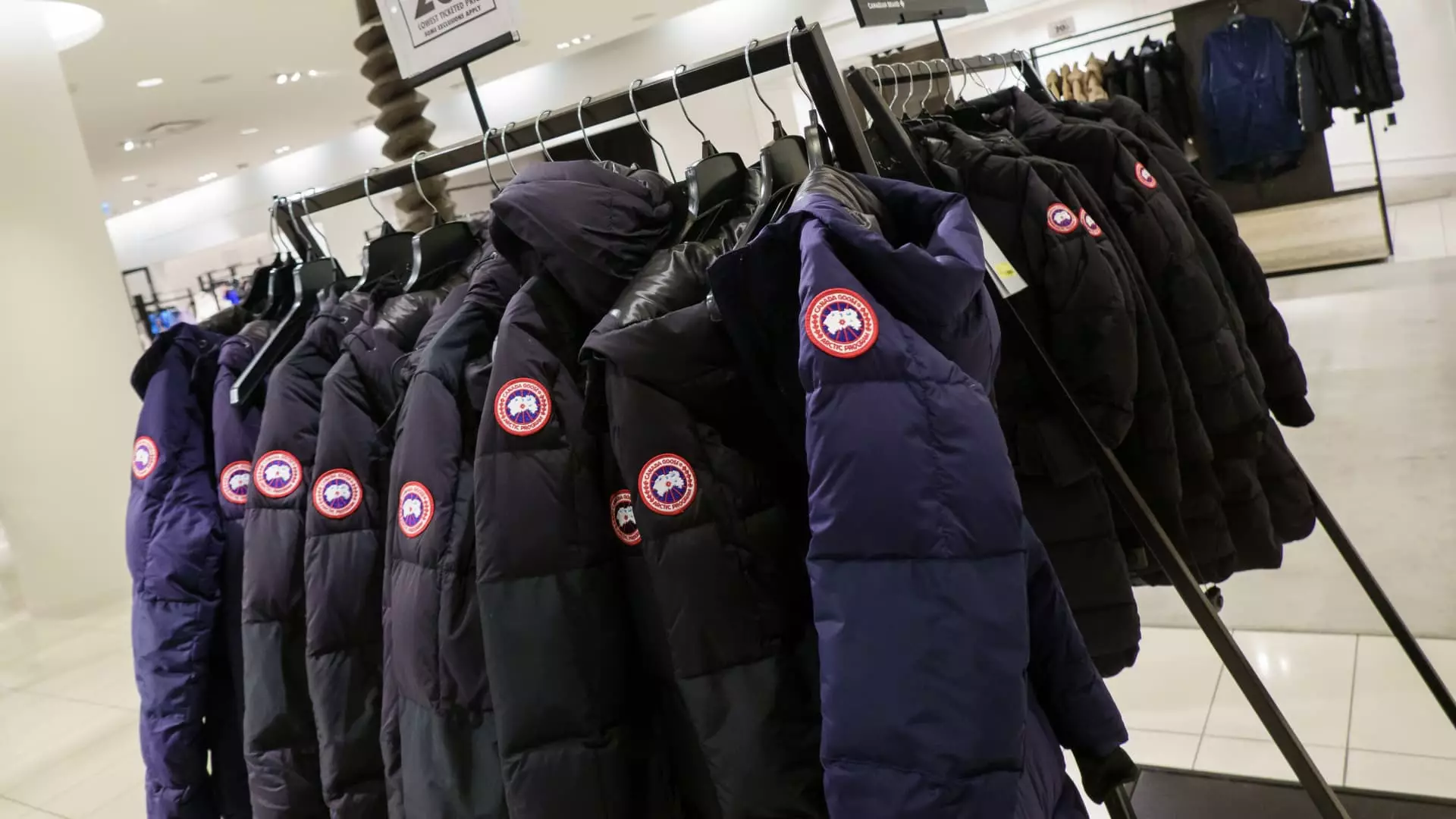Canada Goose, the high-end parka manufacturer, has recently seen its stock surge by over 20% following an impressive fiscal fourth-quarter report. Yet, beneath the surface of this apparent triumph lies a telling tale of economic vulnerability. While the brand celebrated its earnings beating analysts’ expectations—with earnings per share at 33 Canadian cents adjusted compared to the anticipated 23 cents—its decision to withdraw its financial outlook for fiscal 2026 is concerning. The term “macroeconomic uncertainty” echoes throughout corporate corridors, raising questions about not just the company’s future, but the broader luxury goods market itself.
Investors should heed the warning signs embedded in Canada Goose’s announcement. It’s easy to be swayed by a single quarter’s strong performance, but the mask of financial health can often conceal deeper systemic issues. The company expressed confidence in its brand strength and financial solidness, yet this assertion feels hollow in a market where consumer spending patterns are not just dynamic but erratic. The uncertainty surrounding global trade dynamics, exacerbated by geopolitical tensions, has created a fog that makes forecasting not just difficult but potentially misleading.
Manufacturing in Canada: A Double-Edged Sword
One of Canada Goose’s most prominent claims is its production base, with 75% of its units manufactured domestically. This is a badge of honor for a luxury brand seeking to connect with conscientious consumers. However, in times of turmoil, this reliance on domestic manufacturing may also become a liability. The COO pointed out the company’s compliance with the United States-Mexico-Canada Agreement, which currently shields them from tariffs. Yet, the reliance on European production that is exposed to tariff increases should raise alarm bells for investors.
The unwavering reliance on domestic manufacturing may seem commendable, but it could inadvertently anchor the company to a market that faces substantial operational risks amid changing global conditions. Quite paradoxically, while promoting a message of local craftsmanship, Canada Goose could be sacrificing agility essential for navigating today’s capricious economic landscape.
A Toast to Resilience: But at What Cost?
The sentiment shared by CEO Dani Reiss that “this is not the first time Canada Goose has successfully navigated uncertainty” feels more like a coping mechanism than a robust strategic approach. Economic challenges are not merely historical footnotes; they are evolving threats that necessitate forward-thinking and adaptability rather than a nostalgic pilgrimage through past victories.
The remarkable growth in revenue—up 7.4% from last year—should be revered, yet it casts a shadow when juxtaposed against the backdrop of a broader luxury retail decline. Many prominent players such as LVHM and Burberry are grappling with sales slowdowns, a trend that suggests luxury consumerism may be losing its luster. Canada Goose’s push to diversify its offerings—such as venturing into warm-weather clothing and introducing AI-driven shopping experiences—are commendable moves aimed at brand sustainability but also feel desperate in the light of impending challenges. The eyewear launch may be hailed as a significant milestone, yet it raises the query of whether the brand is chasing trends rather than cementing its identity.
Forecasting the Future: Navigating Stormy Seas
The current financial landscape is not just a miasma of challenges for Canada Goose but foreshadows a pivotal moment for the luxury industry. The acknowledgment from CFO Neil Bowden regarding the indirect effects of tariffs hints at an underlying vulnerability that could silently eat into the company’s profits like acid on a metal surface. The decision to cut back projections for fiscal 2026 highlights the trepidation that grips the company, possibly laying bare a reluctance to fully confront a volatile future.
Despite Canada Goose’s commendable strategies and brand loyalty, the lurking specter of economic ambiguity poses a genuine threat. While there is reason to celebrate their quarterly gains, they must also acknowledge that reliance on past successes will not shield them from future storms. If the brand hopes to continue its ascent, it must not only weather this period of uncertainty but actively sculpt a roadmap toward a resilient future that anticipates change rather than merely reacts to it. The luxury sector’s foundation may be fraying, and should Canada Goose fail to adapt, it risks losing its position in a market that demands agility more than ever.

